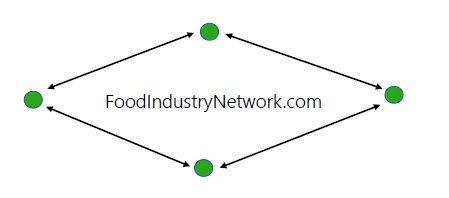Densimetric sorting can improve the quality of olive oil

Scientists discover a cost-effective, density-based method to sort olives, significantly enhancing extra virgin olive oil’s quality and flavour.


Photo credit: Roberta Sorge (2016) Wikimedia Creative Commons CC0 1.0
An Italian dish is probably incomplete without a dash of extra virgin olive oil. Due to its rich flavour, versatile taste and health benefits, extra virgin olive oil is an indispensable item in our kitchen pantries. Regular intake of extra virgin olive oil helps prevent heart disease, improves chronic inflammation and combats cancer.
There are numerous factors that can affect the quality of olives and olive oil. This includes cultivar, tree age, environment, harvest time and storage conditions.
Scientists have recently discovered that post-harvest sorting can be of paramount importance in controlling the olive and olive oil quality. To address this, they have developed a relatively new, easy-to-implement and non-destructive method of olive sorting based on density. Using a saline solution for densimetric sorting, they reported the effects of density as well as harvest time.
They extracted oil from olives using a micro-extraction apparatus, centrifuge and separating funnel. For the analysis of olive oil, they employed high pressure liquid chromatography equipped with an autosampler and coupled with a mass spectrometer detector. Among the phenolic compounds, the sum of secoiridoids was found to be significantly higher in low density oil (627.78± 86.91 mg/kg) compared to high density oil (581.93 ± 77.07 mg/kg).
It should be noted that, according to the regulatory authorities, extra virgin olive oil should contain no more than 0.8 percent free fatty acid level and the peroxide value should be below 12. The low UV absorbance values at 232 nm and 270 nm indicate less oxidation of the oil. These parameters ensure the superior quality that the least processed extra virgin variety is known for.
The scientists in this study found that the low-density olive, which floated in the salt solution during densimetric separation, had a higher maturation index, a higher pulp/pit ratio, lower sugar content, greater oxidative stability, higher polyphenol content, higher C-6 compounds (mainly E-2-hexenal, associated with fruity and green flavours) and a lower content of microbial metabolite. These qualities make low-density oil far superior to its high-density counterpart.
This study clearly shows the importance of density-based sorting after olive harvesting and how it can impact olive oil quality. This simple and cost-effective method can be vital for the industrial manufacturing of high-quality olive oil and for satisfying the diverse sensory needs of consumers.
REFERENCE
Spadi A, Corti F, Angeloni G, Calamai L, Masella P, Parenti A. 2024. Densimetric sorting of olives to control olive oil quality. European Journal of Lipid Science and Technology. e2400017.
About the author


Tania Dey is a senior researcher, lecturer, and scientific consultant with over 15 years of post-PhD experience spanning North America and Europe. She is passionate about staying up to date with scientific breakthroughs and sharing them through her science writing.
Source: newfoodmagazine.com

